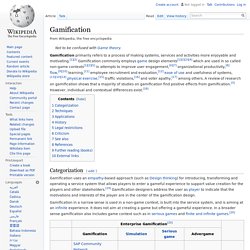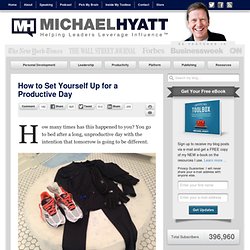

Hatékony iktatás: segítség a teendők elvégzésében. Tetszik az oldalunk?

Kérlek lájkolj! Köszönjük! Az elménk imádja, amikor egy terv összeáll: teendőink eltervezésének puszta ténye felszabadít minket a befejezetlen feladatok terhétől. Mindenki ismeri azt a bénító érzést, amikor a felhalmozódott napi teendőink elárasztják gondolatainkat, nem is beszélve e-mail fiókunk szortírozatlan leveleinek halmáról. E tekintetben David Allen Intézz el mindent (Getting Things Done) című könyve forradalmi újítást kínál az információs kor csüggedt emberének.
Allen könyve saját tapasztalatain alapszik: a szerző éveken át dolgozott rendkívül elfoglalt emberek napi programszervezőjeként. A GTD kiindulási pontja, hogy minden olyan dolgot, melyre emlékeznünk kell, szükséges leírnunk. Az aktuális teendők listájának hatékonysága abban rejlik, hogy minden feladat úgy van megfogalmazva, hogy mit kell tennünk annak érdekében, hogy haladjunk a teendővel.
A Florida Állami Egyetem munkatársai azt állítják, hogy mindez a mögöttes pszichológia miatt hatékony. 1-on-1: David Allen's Two Minute Rule. Pomodoro Technique. Time management method A Pomodoro kitchen timer, after which the method is named. The Pomodoro Technique is a time management method developed by Francesco Cirillo in the late 1980s.[1] The technique uses a timer to break down work into intervals, traditionally 25 minutes in length, separated by short breaks.
Each interval is known as a pomodoro, from the Italian word for 'tomato', after the tomato-shaped kitchen timer that Cirillo used as a university student.[2][3] The technique has been widely popularized by dozens of apps and websites providing timers and instructions. Closely related to concepts such as timeboxing and iterative and incremental development used in software design, the method has been adopted in pair programming contexts.[4] Gamification. Categorization[edit] Gamification in a narrow sense is used in a non-game context, is built into the service system, and is aiming at an infinite experience.

It does not aim at creating a game but offering a gameful experience. In a broader sense gamification also includes game context such as in serious games and finite and infinite games.[20] Another categorization compares gamification with other gameful approaches by looking at characteristics such as spontaneity, rules, or goals:[20] Techniques[edit] Gamification techniques strive to leverage people's natural desires for socializing, learning, mastery, competition, achievement, status, self-expression, altruism, or closure. Another approach to gamification is to make existing tasks feel more like games.[27] Some techniques used in this approach include adding meaningful choice, onboarding with a tutorial, increasing challenge,[28] and adding narrative.[27] Applications[edit] Gamification has been widely applied in marketing. Getting Things Done: The Art of Stress-Free Productivity (9780142000281): David Allen. 044: How to Overcome the Resistance [Podcast] In this episode, I talk about how to overcome the Resistance.
![044: How to Overcome the Resistance [Podcast]](http://cdn.pearltrees.com/s/pic/th/overcome-resistance-podcast-54295980)
Steven Pressfield coined this phrase to describe that invisible, destructive force that opposes you any time you try to start a new project or make an improvement in any area of your life. Photo courtesy of ©iStockphoto.com/mariusFM77 I spoke on this topic at the recent Platform Conference, and the response was tremendous. So I wanted to share some practical counter-measures for dealing with the Resistance in your own life and work. Click to Listen Podcast: Subscribe in iTunes | Play in new window | Download In order to deal with the Resistance, you have to first understand what it is. Attribute #1: It is invisible.Attribute #2: It is internal.Attribute #3: It is insidious.Attribute #4: It is infallible. But what can you do about it? You can only defeat the Resistance by understanding its three primary strategies and applying appropriate countermeasures.
Strategy #1: Fear. Listener Questions Special Announcements Episode Resources. #045: A Peek Inside My Toolbox [Podcast] In this episode, I give all of you a peek inside my toolbox.
![#045: A Peek Inside My Toolbox [Podcast]](http://cdn.pearltrees.com/s/pic/th/inside-toolbox-podcast-michael-62234651)
These are “tools” that I use virtually every day in my professional and personal life. Photo courtesy of ©iStockphoto.com/gemenacom I am often asked about my tools. I hope that this episode gives you some insights and ideas about tools you might use to help with your own workflow. The podcast is a little long, but I didn’t want to leave anything out. Click to Listen Podcast: Subscribe in iTunes | Play in new window | Download I want to look at my tools in six different areas: Hardware, Startup Software, Blogging, Writing, Speaking, and Podcasting Hardware Startup Software. #028: Become More Productive by Reengineering Your Morning Ritual. In this episode, I talk about early morning rituals and how they can set you up to be more productive, more successful, and more healthy.

They might even enable you to make more money! Photo courtesy of ©iStockphoto.com/warrengoldswain According to a 2007 poll conducted by Gallup: 55 percent of U.S. adults consider themselves “morning people.”15 percent consider themselves “afternoon people.”20 percent consider themselves “evening people.”6 percent consider themselves “late night people.” How to Set Yourself Up for a Productive Day. How many times has this happened to you?

You go to bed after a long, unproductive day with the intention that tomorrow is going to be different. Before you know it, it is time to eat lunch and you can’t point to one significant thing you’ve accomplished. In my experience, the best way to ensure a productive day is to set myself up for one the night before. This gives me a chance to make sure I do the most important things first.
Even if my day gets hijacked—and sometimes it does—I’ve achieved my most important tasks. Here are five strategies I use to set myself up for the most productive day possible: Protect my morning routine. Set up your computer with only the first programs you will need loaded.